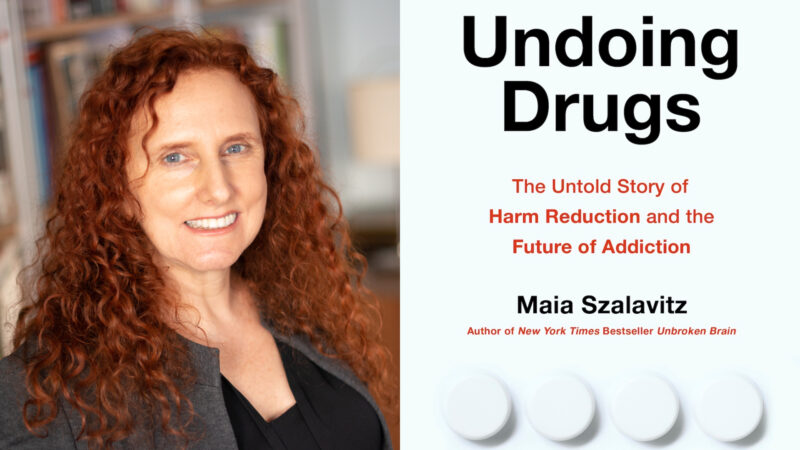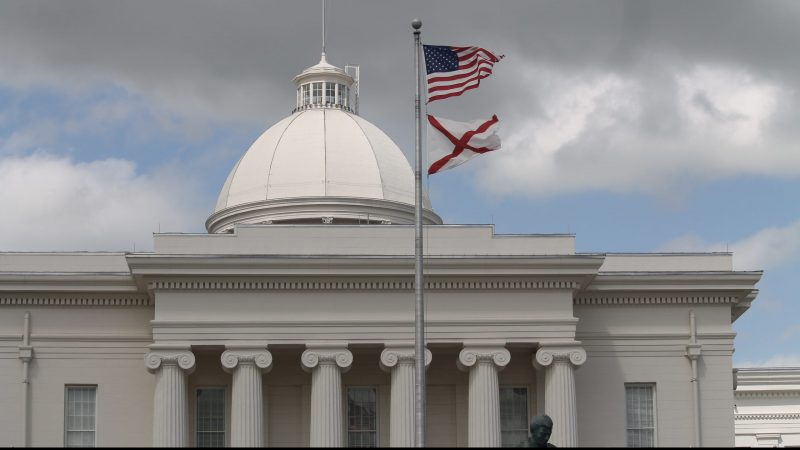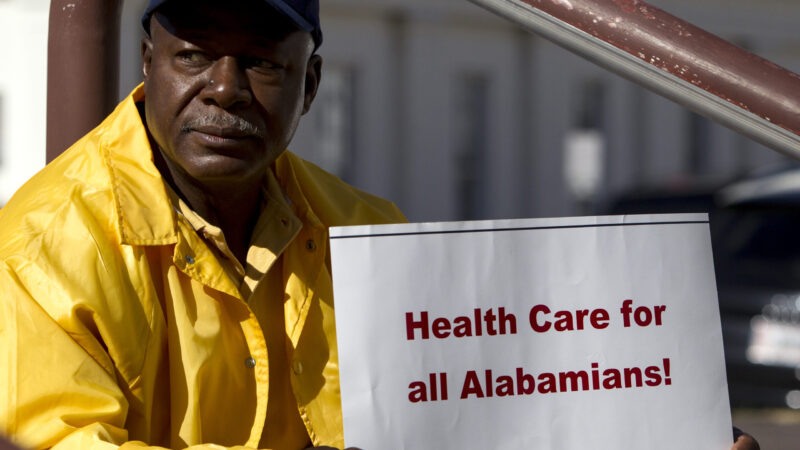‘Black At Samford’ Pushes For Changes In The University’s Culture, Treatment Of Black Students
By Sydney Cromwell, BirminghamWatch
Students at Samford University regularly talk about the “Samford bubble,” the idea that when they step onto campus, they leave the real world behind. Inside the bubble, there’s a sense they are more sheltered and there is more uniformity in the beliefs and backgrounds of students and faculty.
But not for students of color.
Many Black current and former Samford students are now sharing stories about how that bubble has concealed their experiences of racism, discrimination, isolation and pain.
The Black at Samford Instagram account was started June 19, the holiday celebrating the end of slavery after the Civil War, popularly known as Juneteenth. Since then, about 150 submitted stories from students, alumni, potential students and employees have been posted.
The stories run the gamut of racial experiences: exclusion from student groups’ events based on race; offensive stereotypes; assumptions that black students were accepted to Samford based on athletic rather than academic achievements; different treatment by white professors or coaches compared to their white peers; judgment for interracial dating; casual use of racial slurs by white students; and the unofficial racial division of the campus cafeteria.
In one of those posts, Veronica Anjelica Duarte-McCants, a 2015 graduate, said that part of the reason she chose Samford was because of its strong religious reputation.
“However, when I got to Samford it shook me to my core. It made my walk with Christ a continual struggle because I didn’t feel God on that campus. I interacted with closed minded, racist, and bigoted students, faculty, staff, and administrators at Samford and it made me feel like if you’re a Christian and you serve the same God I do, I don’t want any part of it,” she wrote.
“Being Black at Samford meant during an international Jan-term (short academic session between the fall and spring semesters) trip I was isolated and told I would live by myself in all of our locations since it was ‘just me,’” wrote Aneesa Anderson, a 2016 graduate.
Samford University President Andrew Westmoreland issued a statement addressed to Black members of the campus on June 22.
“The wounds, recent or decades old, remain excruciating. I am grateful to those of you who have shared your ideas and hopes for change,” his statement read. He outlined several changes, including establishment of a task force on racial justice, development of scholarships and a hiring of diversity liaisons.
But Black at Samford organizers have posted that the time for vague promises is past.
“Because we have been pushed to the side so many times and have been ‘task forced’ to death, our main issue is the fact that there were no measurable goals in this statement,” the group posted. “We have no way to keep Samford accountable to this statement.”
And the stories continue to roll in.
Jonathan Bailey, a 2014 graduate, said being Black at Samford meant “watching my friends who were athletes, most of whom were black, struggle to have extensions for their assignments even though they were on the road half the semester but have the same professors cancel classes, assignments, and tests to account for Step Sing (an annual student singing and dancing competition).”
Qiona Payton, a 2019 graduate, submitted a story about being injured as a track and field student-athlete, and she said she received worse treatment and rehab from coaches and athletic staff than white teammates with similar injuries. The lack of care led to additional injuries and loss of athletic scholarships, she said.
Her story read, in part: “What hurt the most was that when expressing my experiences and feelings to my team, coaches and athletic department staff over the years there, I was always seen as the stereotypical ‘black girl with an attitude’ for being upset about how I was treated, despite always following instructions and constantly supporting everyone. Black people, especially women, do not get taken care of enough when it comes to mental and physical pain, and I hope that in Samford’s future we can see more love and care for them.”
Yassar Ahman El-Amin, a 2020 graduate and football player, said coaches made jokes at his expense for being Muslim and didn’t accommodate his dietary restrictions.
“I didn’t eat after workouts because the caf only had pork items, and being Muslim this is something that’s not in our diets. I called my coach because I could not afford to get any food on my own, and I was told not to disturb them and if I was really hungry I would eat. On a road game they had order(ed) pork sandwiches knowing that I didn’t eat pork (and) told me to take the pork off and eat the bread,” he said.
El-Amin’s submission also said, “One of the coaches told a group of black players that he ‘owns them’ because he got them out of trouble.”
Saige Avis was on the cheerleading team for two years. “I was asked on multiple occasions to go to specific events solely because I was black and they ‘needed to look diverse,’” she wrote
Lauren Williams, who attended Samford for her freshman year, wrote to Black at Samford that she was surprised to find that she had received more in scholarship and financial aid opportunities than some of her Black friends.
“Looking back, I truly believe that Samford wants to think that they are reaching out and making themselves available to underrepresented communities and neighborhoods but in order to really make a difference, you need to be just as willing to invest in them as they would any other predominantly white community.”
Showing Black children around the campus is all well and good, she wrote, but “what does this accomplish if the children don’t see many professors or students who (look) like them? The faculty that does look like them work in the food industry and custodial services on campus.”
Several students also shared that they had trouble knowing when and how to speak up in response to these experiences.
The Black at Samford account is run by a group of several dozen people with current or former Samford connections. Organizers have written that they intend to continue posting specific demands until they see concrete changes from the administration.
Historically White University
In an email responding to the concerns raised by the Black at Samford postings, Denise Gregory, Samford’s assistant provost for diversity and intercultural initiatives and an associate chemistry and biochemistry professor, said, “While some of these conversations are unsettling, we appreciate the opportunity to hear from our Black students and honor their experiences. We view these stories as an opportunity to build real relationships.”
Samford is a predominantly white school, one of many such institutions around the country that have been grappling in recent years — particularly since protests have escalated in the past two months — with racial justice, discrimination and the experiences of minorities on campus.

According to the fall 2019 enrollment data, about 80.9% of Samford students identify as white. About 9.6% of Samford’s 5,692 undergraduate and graduate students are Black, 3% are Hispanic, 1.5% are Asian, and the remainder are from native populations, multi-racial, non-resident aliens or did not respond to the demographic questions.
The school, originally named Howard College, started in 1841 as a white-only institution. University segregation was ended nationwide by the 1964 Civil Rights Act, and Samford’s first black student was admitted in 1967.
Hearing Stories, Pushing for Change
Though the main focus of Black at Samford has been on racial issues on campus, the creation of the account has led to stories from others who have found themselves not fitting into the “Samford mold,” including students of other ethnicities or who are LGBTQ or non-Christian.
The goal of Black at Samford is two-fold: to give a supportive platform for sharing unheard stories and to press the university for specific changes.
The project’s five action points, which are listed on the Black at Samford Instagram homepage, are:
- More diversity in hiring faculty, staff, board of trustees appointments and task forces, with the goal that by 2030, at least a third of undergraduate and graduate faculty and trustees members should be people of color. In a poll posted on the page, 75 respondents said they had never had a black professor at Samford, 25 said they had one black professor, and even fewer students had more than one.
- Targeted, required events for students to address systemic racism, equity and allyship. This includes concrete plans with implementation dates from student groups on campus for fostering more inclusion.
- A mandatory class for freshmen on race and allyship, taught by a full-time Black professor with experience in discussing issues of equity and diversity.
- Increased funding and expansion of the Office of Diversity and Intercultural Initiatives, both in employees and programs.
- Expansion of the campus counseling office to include counselors of color with experience in racial issues and PTSD.
- More funding for competitive scholarships for black students.
Before Black at Samford was established, the online petition “Samford Alumni for Black Lives” launched in May to call for more formal and informal campus events about “racial equity, cultural humility and white allyship.” The petition has more than 5,000 signatures.
Administration Proposals
In his June 22, message, Westmoreland outlined several plans for change on campus, some of which were announced to the campus at the beginning of June.
His commitments in that message included:
- Creation of a Task Force on Racial Justice, including a website to anonymously submit comments and recommendations.
- An increase in hiring diverse staff and creation of scholarships for students of color.
- Curriculum changes to bring more attention to racial justice.
- A stronger relationship with Birmingham City Schools to increase the number of graduates’ who attend Samford.
- Conversations with Black students and employees about racial issues and Samford’s successes or failures.
- The appointment of new diversity liaisons and manpower for the Office of Diversity and Intercultural Initiatives, increased acknowledgment of racial equity and justice in the university’s Honor Code, and racial sensitivity and implicit bias training for all university employees and the leaders of campus organizations.
“We are actively working with faculty leadership to implement curriculum changes to help students gain improved understanding of racial justice. We are preparing our students to be global citizens. Cultural competency and respect for others are important tools for our students to develop as (they) move into their professional lives,” Gregory said via email.
Gregory expanded on some of the initiatives that Westmoreland discussed, including that the diversity liaisons would directly connect the diversity office with Samford’s 10 schools and the athletics department in the hope of better student engagement.
“Oftentimes, we struggle to draw participation from members of the community when we provide opportunities for diverse education and conversation. We are working to combat this issue by leaning into partnerships with the Office of Greek Life, the Office of Spiritual Life, Student Leadership and Involvement, and many other departments on campus,” she said.
In response to Westmoreland’s message, Black at Samford posted its own statement on June 22 that said the letter was a good start.
“We are thankful, in a sense, that we feel we have been heard, but obviously, we weren’t very clear,” the post said. “We need specifics.”
Once praised, settlement to help sickened BP oil spill workers leaves most with nearly nothing
Thousands of ordinary people who helped clean up after the 2010 BP oil spill in the Gulf of Mexico say they got sick. A court settlement was supposed to help compensate them, but it hasn’t turned out as expected.
Q&A: How harm reduction can help mitigate the opioid crisis
Maia Szalavitz discusses harm reduction's effectiveness against drug addiction, how punitive policies can hurt people who need pain medication and more.
The Gulf States Newsroom is hiring a Community Engagement Producer
The Gulf States Newsroom is seeking a curious, creative and collaborative professional to work with our regional team to build up engaged journalism efforts.
Gambling bills face uncertain future in the Alabama legislature
This year looked to be different for lottery and gambling legislation, which has fallen short for years in the Alabama legislature. But this week, with only a handful of meeting days left, competing House and Senate proposals were sent to a conference committee to work out differences.
Alabama’s racial, ethnic health disparities are ‘more severe’ than other states, report says
Data from the Commonwealth Fund show that the quality of care people receive and their health outcomes worsened because of the COVID-19 pandemic.
What’s your favorite thing about Alabama?
That's the question we put to those at our recent News and Brews community pop-ups at Hop City and Saturn in Birmingham.







